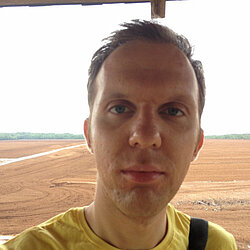Fens and bogs are wet areas of the earth's surface in which, under constant or periodic humidity conditions, incomplete decomposition of plant residues has occurred and a layer of peat has accumulated. Fens in Latvia cover up to 10% of the country's territory. Most of Latvia's fens are unaffected by economic activities, peat is extracted only in 4% of the total area of Latvia's fens.
Peat is an unconsolidated or poorly consolidated plant sediment that contains at least 50% organic matter in the air-dry state. The peat mass consists of water, detritus, humus, and inorganic (mineral) particles. The studies of fens and peat distinguish three main types of peat – moss or raised bog peat, transitional type bog peat, and grass or fen bog peat. Peat has formed in present-day fens during the last 11 000 years in the process of mineral soil swamping, overgrowing of rivers and lakes.
Peat, but especially humus, has a wide range of applications. It can be used in virtually any area of the economy, from agriculture to medicine. At the same time, the great diversity of peat properties and differences in the research level of various peat types significantly limit the wider use of peat in the economy. The use of peat In Latvia is extensive in agriculture – as soil substrates and in livestock farming as litter, however, the identified possibilities for peat use encompass a much wider spectrum:
- agriculture and horticulture;
- livestock farming and veterinary;
- construction and building;
- road construction;
- mining;
- chemical industry;
- environmental quality improvement;
- paper industry;
- pottery;
- food industry;
- energy;
- medicine and cosmetology.
Peat research


 CONFERENCE
CONFERENCE